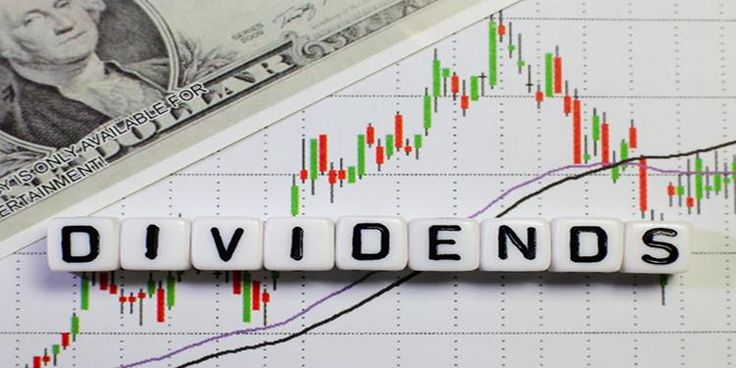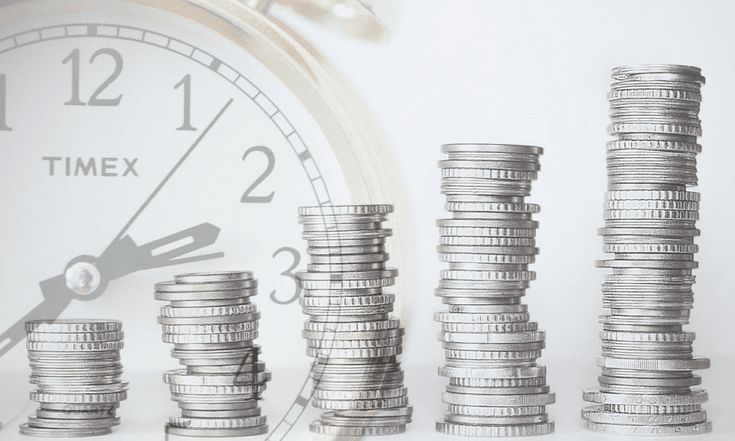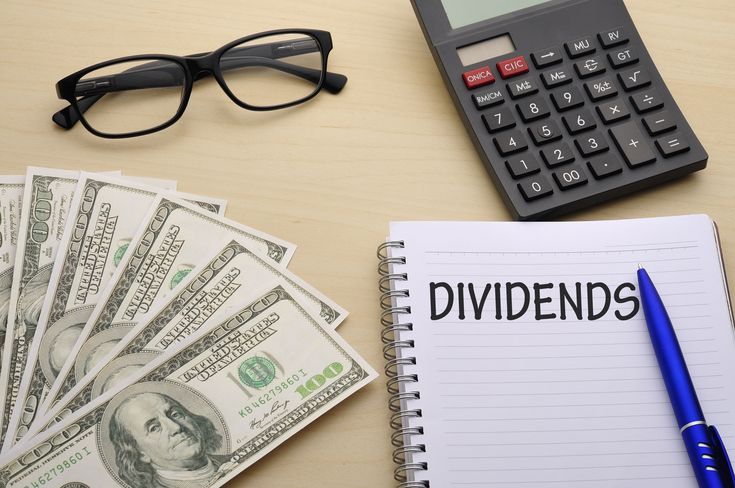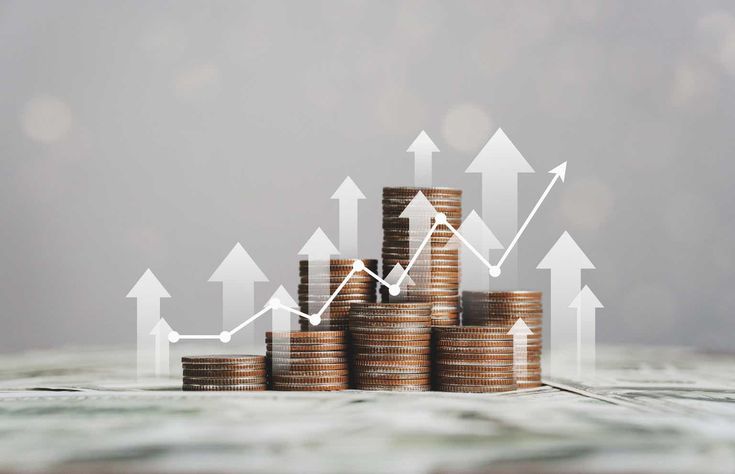What is a dividend: Understanding types, processes, and impacts
Dividends represent a portion of a company’s earnings distributed to its shareholders. These payments are a way for companies to share their profits with investors. Understanding this concept is crucial for investors as it can significantly impact investment returns and stock prices.
In this article, we will learn about the types of dividends, their payment processes, and key financial metrics like yield and payout ratio. Additionally, we will explore the factors influencing dividend policies, tax implications, and the impact on stock prices.

How do dividends work?
Dividends represent a portion of a company’s earnings distributed to shareholders as their share of the profits. Typically, companies pay dividends on a quarterly basis, with the specific amount decided by the board of directors, who base the decision on the company’s recent earnings performance.
Dividends can be issued in the form of cash or additional shares. When a dividend is declared, the company announces a payment date, indicating when shareholders will receive the dividend directly in their accounts.
The dividend yield of a stock is calculated by dividing the dividend amount paid per share by the company’s current share price. This yield, expressed as a percentage, shows the return shareholders earn from dividends, such as a 2.5% yield, relative to their investment in the stock.
It’s important to note that not all companies issue dividends to holders of common shares; however, preferred shareholders are typically assured of a fixed dividend payment.
Understanding dividends
A dividend represents a portion of a company’s profits paid to shareholders as a reward for their investment. Dividends are typically approved through shareholder voting rights, highlighting the importance of shareholder involvement in corporate decisions. While cash dividends are the most common form, companies may also issue dividends in the form of additional shares of stock.
Many mutual funds and exchange-traded funds (ETFs) also distribute dividends, providing investors with regular income from their holdings. Dividends are usually paid from a company’s net profits, although some companies may continue to distribute dividends even during periods of low or negative profitability.
This commitment to dividend payments often signals stability and reliability, making dividend-paying stocks particularly appealing to investors seeking steady returns.
Why do companies pay dividends?
Companies pay dividends to distribute a portion of their profits to shareholders as a reward for their investment. This practice can attract and retain investors, signaling the company’s financial stability and profitability. Regular dividend payments can also indicate strong cash flow and a commitment to returning value to shareholders. For example, a well-established company with consistent profits might pay dividends to show confidence in its future earnings and maintain investor trust.

Types of dividend
Different types of dividends cater to various investor needs and company policies. Common types include cash dividends, stock dividends, special dividends, and preferred dividends.
Cash dividend
Cash dividends are the most common type, paid in cash directly to shareholders. Companies typically distribute these dividends quarterly. For example, if a company announces a cash dividend of $1 per share, and an investor holds 100 shares, they will receive $100 in cash dividends.
Stock dividends
Stock dividends involve the company issuing additional shares to shareholders instead of cash. This type of dividend increases the number of shares outstanding but doesn’t affect the company’s cash reserves. For example, if a company declares a 10% stock dividend, an investor holding 100 shares would receive 10 additional shares, bringing their total to 110 shares.
Special dividends
Special dividends are one-time payments to shareholders, often resulting from extraordinary profits or asset sales. These are not regular occurrences and usually reflect an unusually high-profit period. For instance, a company might pay a special dividend of $5 per share following the sale of a significant business unit.
Preferred dividends
Preferred dividends are paid to preferred shareholders, who have a higher claim on earnings than common shareholders. These dividends are often fixed and paid at regular intervals. For example, a company might pay a 5% annual dividend on preferred shares with a par value of $100, resulting in a $5 dividend per preferred share each year.
Dividend payment process
The process of dividend payment involves several key dates and steps. Understanding these dates helps investors know when they are eligible for dividends.
Declaration date
The declaration date is when the company’s board of directors announces the dividend payment. This announcement includes the dividend amount, the record date, and the payment date. The declaration signifies the company’s commitment to paying the dividend. For example, if a company declares a $2 per share dividend on January 1st, the details will include the ex-dividend date and payment date.
Ex-dividend date
The ex-dividend date is crucial for determining who will receive the dividend. To be eligible, an investor must own the stock before this date. If the stock is bought on or after the ex-dividend date, the seller retains the dividend payment. Typically, the ex-dividend date is set one business day before the record date. For instance, if the record date is January 10th, the ex-dividend date might be January 9th.
Record date
The record date is the cut-off date established by the company to determine which shareholders are eligible to receive the dividend. Shareholders on record as of this date will receive the dividend. Using the previous example, if the record date is January 10th, only shareholders listed on the company’s records on that date will receive the dividend.
Payment date
The payment date is when the dividend is actually paid out to shareholders. This is the date when cash or stock dividends are distributed to the eligible shareholders. For example, if the payment date is January 20th, shareholders will receive their dividends on this date.
Dividend yield and payout ratio
Dividend yield and payout ratio are essential metrics for evaluating dividend-paying stocks.
Dividend yield
Dividend yield measures the annual dividends paid by a company as a percentage of its stock price. It gives investors a sense of how much cash flow they are getting for each dollar invested in the stock. To calculate dividend yield, divide the annual dividend per share by the stock price per share.
For example, if a company pays an annual dividend of $2 per share and the stock price is $50, the dividend yield is 4% ($2 / $50 = 0.04 or 4%).
Payout ratio
The payout ratio shows the proportion of earnings a company pays out as dividends. It indicates how sustainable the dividend payments are. A high payout ratio may suggest that the company is returning a large portion of its earnings to shareholders, which could limit its ability to reinvest in growth. Conversely, a low payout ratio might indicate that the company retains more earnings for expansion.
To calculate the payout ratio, divide the annual dividend per share by the earnings per share (EPS).
For example, if a company’s annual dividend is $2 per share and its EPS is $5, the payout ratio is 40% ($2 / $5 = 0.4 or 40%).

Factors influencing dividend policy
Several factors influence a company’s dividend policy. Understanding these factors helps investors assess the reliability and sustainability of dividend payments.
Company profitability
Profitability is the primary determinant of a company’s ability to pay dividends. More profitable companies are generally able to distribute higher dividends. However, companies with fluctuating profits might opt for lower, more sustainable dividends. For example, a technology startup with variable earnings might pay lower dividends than a well-established utility company with stable earnings.
Cash flow and retained earnings
Strong cash flow is essential for maintaining regular dividend payments. Companies need sufficient cash reserves to meet their operational needs and pay dividends. Retained earnings, which are profits not distributed as dividends, also play a role. Companies might retain earnings for future expansion or to cushion against economic downturns. For instance, a company might choose to retain earnings to fund a new product development rather than increase dividend payments.
Market conditions and investor expectations
Market conditions can impact dividend policies. During economic downturns, companies might cut dividends to preserve cash. Conversely, in prosperous times, companies may increase dividends to attract and retain investors. Investor expectations also play a role. Companies with a history of regular dividends are often expected to maintain or increase payouts. For example, a blue-chip company known for consistent dividends might face investor backlash if it cuts dividends during a recession.
Tax implications of dividends
Dividends have tax implications that investors need to understand. Tax treatment varies based on the type of dividend and the investor’s tax status.
Qualified vs. non-qualified dividends
Qualified dividends are taxed at the lower capital gains tax rates, while non-qualified dividends are taxed at ordinary income tax rates. For dividends to be qualified, they must be paid by U.S. corporations or qualified foreign corporations, and the investor must meet certain holding period requirements. For example, if an investor holds a stock for more than 60 days during the 121-day period that begins 60 days before the ex-dividend date, the dividend is considered qualified.
Tax rates and reporting requirements
The tax rate for qualified dividends is typically 0%, 15%, or 20%, depending on the investor’s taxable income. Non-qualified dividends are taxed at the investor’s ordinary income tax rate. Dividends must be reported on the investor’s tax return, usually documented on Form 1099-DIV. For instance, an investor in the 22% tax bracket would pay a 22% tax rate on non-qualified dividends but only 15% on qualified dividends if their taxable income falls within the specified range.
Dividend reinvestment plans (DRIPs)
Dividend Reinvestment Plans (DRIPs) allow shareholders to reinvest their dividends to purchase more shares, often at a discounted price and without brokerage fees. These plans can be an effective way to grow investment holdings over time. For example, if a company offers a DRIP with a 5% discount, and an investor receives a $100 dividend, they can reinvest this dividend to buy $105 worth of shares without additional costs.
DRIPs provide the benefit of compounding returns by reinvesting dividends. They also offer a cost-effective way to increase shareholdings. However, investors may face drawbacks such as less liquidity and potential tax complications, as reinvested dividends are still subject to taxes. For instance, even though dividends are reinvested through a DRIP, investors must report them as taxable income on their tax returns.

Impact of dividends on stock prices
Positive dividend announcements, such as increased dividend payments, often lead to a rise in stock prices. This is because investors perceive the company as financially strong. Conversely, a reduction or omission of dividends can result in a drop in stock prices, signaling potential financial troubles. For example, if a company announces a 10% dividend increase, its stock price might rise as investors view the increase as a sign of its robust financial health.
Historical trends and market reactions
Historical data shows that companies with a consistent dividend payment record often enjoy more stable stock prices. Market reactions to dividend changes can vary, but generally, higher dividends are seen as positive signals, while lower dividends can cause concern among investors. For instance, historical trends indicate that companies in the utility sector, known for stable dividends, tend to have less volatile stock prices than technology companies with variable dividends.
FAQs
What is the simple definition of a dividend?
A dividend is a portion of a company’s profits given to shareholders. It is a way for companies to share earnings with investors.
What is an example of a dividend?
When a company announces a payment of $1 per share. If an investor owns 100 shares, they will receive $100 as a dividend
Is dividend a profit?
A dividend is not profit but a portion of the company’s profit distributed to shareholders. The profit remains with the company.
How is the dividend paid?
Payments can be made in cash or additional shares. The company’s board decides the method and amount.
How are dividends paid on shares?
Payments on shares are either cash transferred to shareholder accounts or additional shares issued to them based on the number of shares they own.


